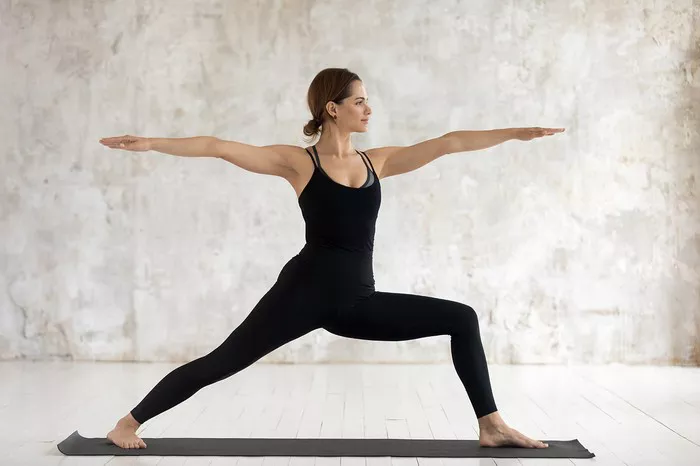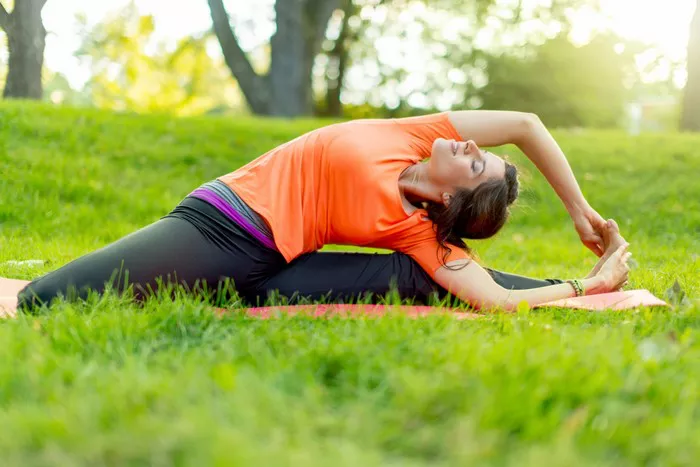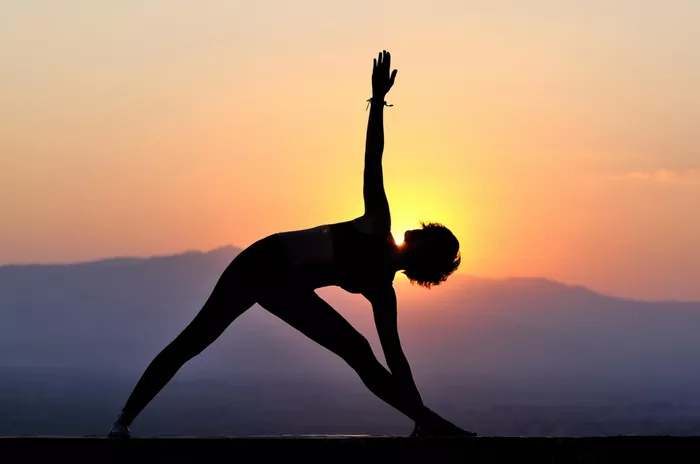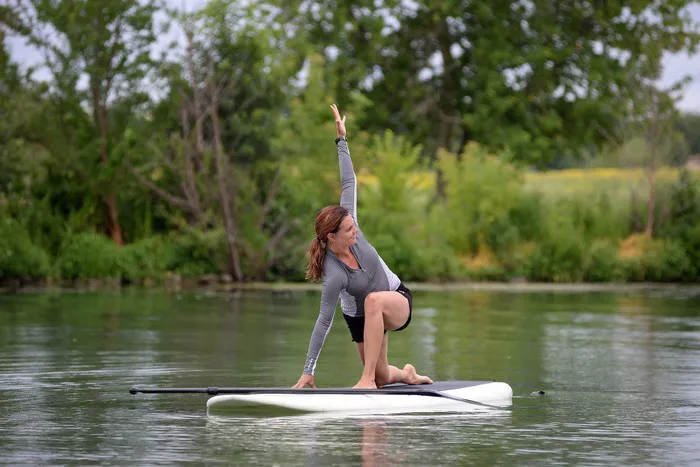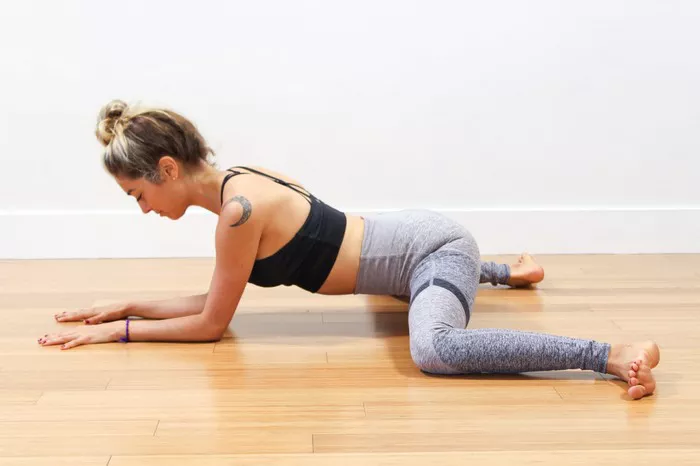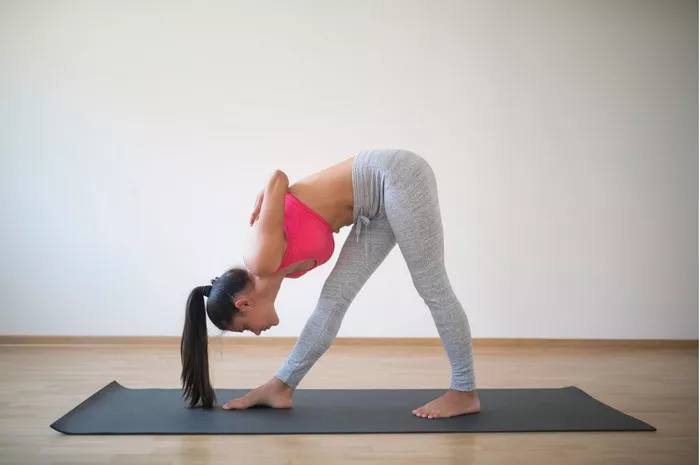Restorative yoga is a gentle, therapeutic form of yoga that emphasizes relaxation, deep breathing, and restorative poses designed to promote relaxation, reduce stress, and improve flexibility. Unlike other styles of yoga that may focus on building strength or increasing endurance, restorative yoga is primarily focused on healing and restoring balance to the body and mind.
While restorative yoga is accessible and beneficial to most individuals, there are specific groups of people who should either avoid it or approach it with caution. It’s important to understand who might not be suitable for this practice or who might need modifications, as some physical or medical conditions could be exacerbated by certain aspects of restorative yoga.
This article explores the individuals who should avoid restorative yoga, offering insights into specific conditions and why this gentle practice might not be the right fit. We’ll also discuss the need for tailored modifications to ensure that everyone can benefit from yoga, regardless of their unique circumstances.
Understanding Restorative Yoga
Before diving into who should avoid restorative yoga, it’s essential to understand what this practice entails.
Restorative yoga is focused on providing deep rest and relaxation. It often involves long-held, supported poses where the body is encouraged to release tension and stress. Props like blankets, bolsters, blocks, and straps are commonly used to support the body in various poses, allowing practitioners to fully relax and let go of muscle tension. The poses are typically held for several minutes at a time, and the practice is guided by deep, mindful breathing.
The goal of restorative yoga is to activate the parasympathetic nervous system, which induces a state of rest and digestion, counteracting the effects of chronic stress. It is known to promote better sleep, lower blood pressure, improve emotional well-being, and aid in recovery from injuries or illness.
Now that we have a general understanding of restorative yoga, let’s explore who should not do this practice or who might need special considerations.
1. People with Certain Injuries or Physical Conditions
Restorative yoga is gentle by nature, but for individuals with specific injuries or conditions, even this gentle practice might need to be avoided or modified.
Severe Back Pain or Spinal Conditions
While restorative yoga can be beneficial for those recovering from back pain, individuals with severe back issues, such as a herniated disc or advanced spinal degeneration, may find that some restorative poses worsen their condition. In some cases, long-held poses where the back is unsupported could place undue pressure on the spine or exacerbate discomfort.
For example, poses that involve forward folding or deep backbends could increase compression in the lower back, which could aggravate the condition. If you have a severe back injury or spinal condition, it is important to consult with a healthcare provider or a yoga therapist before attempting restorative yoga.
Knee and Hip Problems
Although restorative yoga uses props to support the body, some poses that require deep squatting, kneeling, or hip rotation may still be problematic for people with knee or hip issues. Individuals with osteoarthritis, bursitis, or other joint conditions may experience discomfort or increased strain on their knees and hips during certain poses. Long periods of sitting on the floor or in poses that place pressure on the knees (such as Child’s Pose or variations of Lotus Pose) may aggravate existing conditions.
Those with chronic joint pain or injuries should approach restorative yoga with caution and work with a knowledgeable instructor who can suggest modifications or alternatives to ensure they are practicing safely.
Neck Issues
People with neck pain or spinal conditions that affect the cervical spine should be cautious when attempting restorative yoga. Poses like shoulder stands, plow pose, or any poses that involve placing weight on the neck should be avoided unless properly supported and modified. In some cases, even gentle movements like deep neck stretches may cause discomfort, especially if the muscles around the neck are tight or inflamed.
It is essential for individuals with neck issues to communicate with their yoga instructor to receive appropriate modifications that protect the neck and spine. Props such as neck rolls or additional support may be required to avoid injury.
2. Pregnancy and Postpartum Recovery
Pregnancy and postpartum recovery require special attention in any type of physical activity, including yoga. While restorative yoga can be a very supportive practice for pregnant women and those recovering after childbirth, it’s not appropriate for everyone in these categories.
Pregnancy Complications
Restorative yoga can be incredibly beneficial during a healthy pregnancy, as it helps relieve stress, improve circulation, and alleviate common discomforts such as back pain. However, individuals with pregnancy complications, such as preeclampsia, placenta previa, or other high-risk conditions, should avoid engaging in yoga without first consulting their healthcare provider.
Certain restorative poses, such as those that involve lying flat on the back, may be contraindicated after the first trimester for some pregnant women, as they can place pressure on the vena cava, the large vein that returns blood to the heart. In such cases, alternative poses and modifications should be employed.
Postpartum Considerations
Restorative yoga can be incredibly helpful during postpartum recovery, as it aids in relaxation, muscle healing, and mental recovery. However, for women who have experienced significant complications during childbirth (such as cesarean sections, pelvic floor injuries, or significant tearing), it’s important to consult with a medical professional before beginning any yoga practice.
Certain restorative poses may put pressure on sensitive areas of the body, such as the pelvic floor, so they should be avoided until the body has had time to fully heal. A certified yoga instructor trained in prenatal and postpartum yoga can provide guidance on which poses are safe and beneficial during recovery.
3. Acute Medical Conditions and Recent Surgeries
Restorative yoga is not recommended for people who are recovering from recent surgeries, particularly those that involve the abdomen, joints, or muscles. While restorative yoga can be a great form of rehabilitation after healing has occurred, it should not be practiced during the acute phase of recovery.
Recent Surgeries
For individuals recovering from surgeries like hip replacements, abdominal surgery, or joint repairs, restorative yoga should be avoided until the healing process is complete. The body needs time to repair itself, and certain poses may place strain on healing tissues. For example, deep forward folds or twisting poses can put unnecessary pressure on surgical sites.
Once the acute recovery phase has passed and the individual has received clearance from a healthcare provider, restorative yoga can be incorporated as a gentle way to aid recovery, improve flexibility, and reduce scar tissue.
Acute Illness or Inflammation
People experiencing acute illnesses such as the flu, infections, or inflammatory flare-ups should avoid restorative yoga until they have recovered. The body’s energy should be focused on healing, and engaging in any form of exercise, including yoga, could divert energy away from recovery. Furthermore, certain restorative poses could exacerbate inflammation in the body, leading to discomfort.
If you are recovering from an illness or injury, always wait until your body is in a more stable and energized state before engaging in restorative yoga or any other form of physical activity.
4. Severe Mental Health Conditions
Restorative yoga can have profound benefits for mental well-being, such as reducing anxiety, promoting relaxation, and improving mood. However, individuals with severe mental health conditions such as untreated depression, severe anxiety disorders, or those in active crisis situations should proceed with caution when attempting restorative yoga.
While the practice of slow, mindful movement and deep breathing can help calm the mind, it may also bring up intense emotions, especially for individuals dealing with trauma or mental health crises. In these cases, restorative yoga could trigger emotional distress, and it may not provide the same calming effects that it offers to individuals with stable mental health.
For individuals with severe mental health conditions, it’s important to work with a therapist or counselor in conjunction with any yoga practice. A yoga instructor trained in trauma-informed care can provide modifications and create a safe environment for emotional healing during the practice.
5. People with Limited Mobility
Restorative yoga is often highly accessible to people with limited mobility because of the use of props and supported poses. However, individuals with certain physical disabilities or limited mobility may find some poses challenging or inaccessible.
Severe Mobility Limitations
People with severe mobility issues, such as those who use a wheelchair or have significant physical disabilities, may find that certain restorative poses are difficult to achieve, even with props. However, modifications can often be made to accommodate these limitations. For example, a seated restorative practice using a chair or wheelchair may be an excellent alternative.
In these cases, working with an experienced yoga teacher who specializes in adaptive yoga can ensure that the practice is both safe and effective.
Conclusion
Restorative yoga offers profound benefits, but it’s not appropriate for everyone in every circumstance. People with specific injuries, medical conditions, or unique health concerns should consult with their healthcare provider before beginning any form of yoga practice, including restorative yoga. While restorative yoga is generally a safe and accessible practice, being mindful of individual limitations and adjusting the practice accordingly can help avoid harm and ensure the greatest benefit.
If you are in one of the categories mentioned above, or if you are simply unsure whether restorative yoga is appropriate for you, the best course of action is to consult a qualified healthcare provider and a certified yoga instructor. They can help you determine the most appropriate approach and suggest modifications or alternative practices that support your health and well-being.
Remember, yoga is a personal practice. It should be adapted to fit the needs and capabilities of your body, and restorative yoga is no exception. By listening to your body, making modifications when needed, and seeking expert guidance, you can safely enjoy the many benefits restorative yoga offers.
Related Topics:




